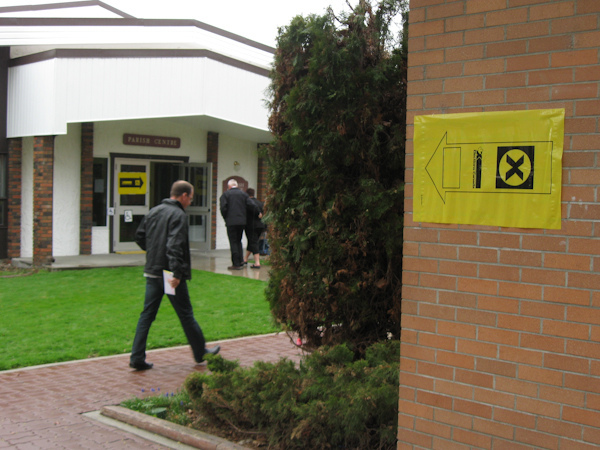Less than a year from now, on October 19, 2015, Canadians will vote, or not, in the next federal election. If the next election is like four of the last five contests, about 40 per cent of Canadians will not cast a ballot on election day.
Choosing not to vote is as good as voting Conservative. If you did not vote in the last election, you put Stephen Harper in the prime minister’s office with a majority government.
The 25/60 rule says that if one Canadian party can get 25 per cent of the population to come out and vote for it, that party can win a majority government so long as only 60 per cent of eligible voters turn up to vote.
For Stephen Harper to lose power, either the Conservative voter base must decline, or more people need to turn up and vote.
The government busily changing Canada out of recognition was elected by fewer than 24 per cent of those Canadians registered to vote. It was enough to give the Conservatives 54 per cent of the seats in the House of Commons, because only 60 per cent of Canadians eligible to vote thought it was important to cast a ballot.
Despite not leading in current public opinion polling, the Conservatives stand a good chance of being re-elected, unless Canadians turn out to vote in increasing numbers. With no increase in voter turnout, all the Conservatives need for re-election is to maintain their base, which is why the government feeds it raw meat on a regular basis, including joining the American war party in Iraq.
To activate its base, the Harper forces can count on its shock troops the Canadian Taxpayers Federation, the Canadian Federation of Independent Business, and the National Citizens Coalition, whose pronouncements are faithfully reported in the mainstream media as news.
The Harper Conservatives’ game plan was successful in 2011. The prime minister plans to win again in 2015 employing updated versions of similar tactics.
First, the Harper Cons aim to suppress the Liberal party vote by demonizing its leader Justin Trudeau, implanting the idea he is “just not up to the job” of being prime minister. This strategy worked against Stephen Dion and Michael Ignatieff, and Harper thinks it will work again. With over half of intended Liberal voters saying the NDP is their second choice, expect the NDP to go negative on Trudeau as well.
The government has let it be known it is prepared to pirate news reports for use in its characteristic negative political advertising, infringing copyright and blurring the lines between independent media coverage, and partisan propaganda. As Aaron Wherry reports for Maclean’s, news reports feature in the latest Con ads targeting Justin Trudeau.
To keep it low, the recent Conservative electoral law denies Elections Canada any role in promoting voter turnout. The unfair “Fair Elections Act” ends the practice of educating the public about the importance of voting in a democracy. Under the new electoral law, voting is treated as if it were a personal matter, without consequences for the workings of democracy.
The Harper Conservatives rely on mainstream coverage of politics as a hotbed of corruption and wrongdoing to make people believe all politicians are the same.
If all politicians are the same, why vote indeed? Double nonsense. All politicians and the parties they represent are far from the same. Candidates for office come from widely divergent backgrounds, and offer varying talents and abilities. New Democrats, Greens, the Bloc Québeçois, and Liberals are strikingly different from each other and from Conservatives. Serious differences exist on important issues facing Canadians.
The Conservatives have shown a willingness to do anything to win an election. For the 2015 election, 30 new seats will be added to the House of Commons; 15 in Ontario, six in Alberta, six in B.C., and three in Quebec. The Conservatives are expected to have an outright advantage in well over one-half of the new ridings.
After the last election, Elections Canada received multiple complaints about misleading information being provided to voters about changes to polling places. Government practice includes tactics of voter suppression, recognized by the courts in a significant case brought by the Council of Canadians, though the presiding judge declined to overturn election results.
Spending extravagant amounts of public dollars to promote itself has been standard practice for this government since it took office nine years ago.
The Conservatives lead the other parties in fundraising by a wide margin, raising 120 per cent more than the NDP Official Opposition, and 50 per cent more than the third-party Liberals.
In a generation, voter turnout in Canada has declined from the 80 per cent of eligible voters range to the 60 per cent range. Inequalities of wealth and income have increased over the same period.
Weak democratic participation opens the door to control of politics by well-funded corporations, and political figures eager for their approval. Higher turnout rates force political parties to express voter aspirations, and parliamentarians to defend the Canadian quality of life.
Duncan Cameron is the president of rabble.ca and writes a weekly column on politics and current affairs.
Photo: Andrew Bates/flickr



